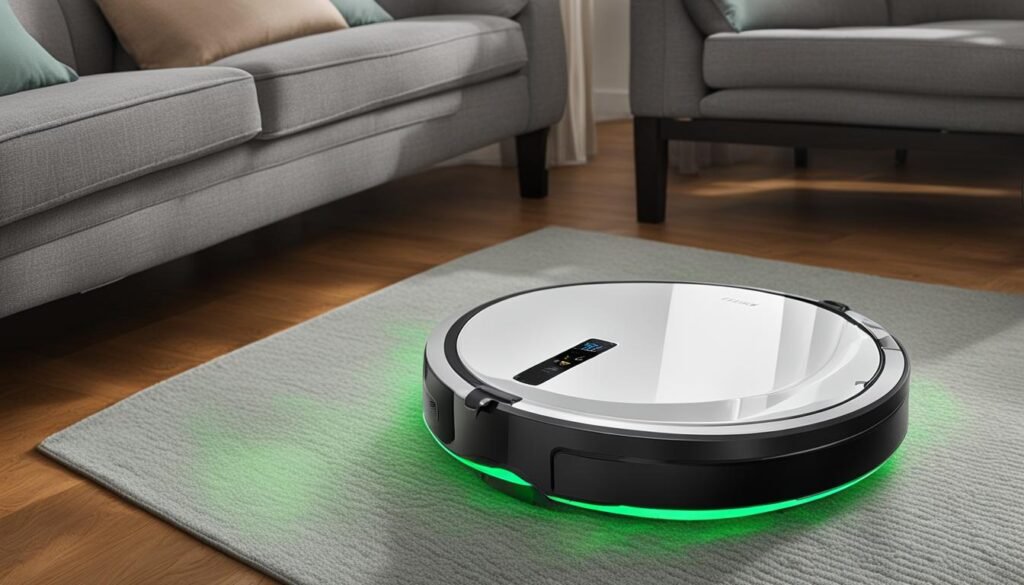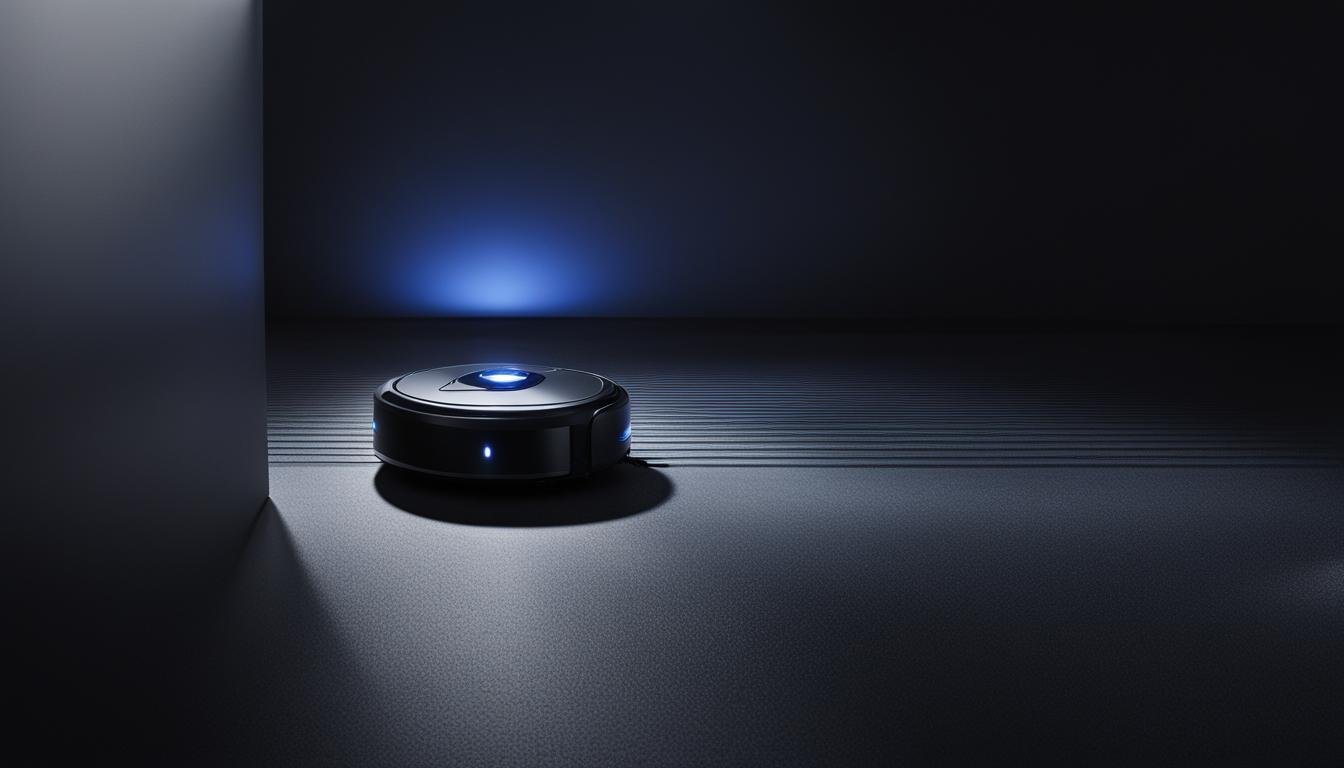As a proud owner of a robot vacuum, I often find myself fascinated by its ability to navigate and clean my home effortlessly. However, I’ve noticed that it sometimes struggles on my dark floors. This got me wondering why robot vacuums don’t work as effectively on dark surfaces.
Robot vacuums rely on sensors and cameras to create a virtual map of your home and determine the best cleaning route. While most robot vacuums can handle low-light conditions, dark floors pose a unique challenge for some models. Robots equipped with infrared sensors or similar technology can usually function in the dark without any issues. However, other models may encounter difficulties due to limitations in their navigation sensors.
Dark floors can be misunderstood as edges or obstacles by certain robot vacuums, causing them to avoid cleaning those areas effectively. This can result in the robot vacuum not picking up dirt or debris properly on dark surfaces, leaving your floors less clean than expected.
Key Takeaways:
- Robot vacuums rely on sensors and cameras to navigate and clean your home.
- Some robot vacuums struggle on dark floors due to limitations in their navigation sensors.
- Models with infrared sensors or similar technology can usually work in low-light conditions.
- Dark floors can be misunderstood as edges or obstacles, leading to ineffective cleaning.
- Regular cleaning of the robot vacuum’s sensors is important for optimal performance.
Factors Affecting Robot Vacuum Performance on Dark Floors
When it comes to cleaning dark floors, robot vacuums may face certain challenges and limitations. Understanding these factors can help troubleshoot issues and improve performance on dark flooring.
1. Navigation Sensors: Robot vacuums equipped with laser-based or infrared detection sensors are better suited for cleaning in the dark. However, models with optical sensors may struggle to identify objects and can bump into furniture or walls.
2. Obstacle Detection Sensors: Some robot vacuums rely on infrared sensors to detect obstacles. These sensors may have difficulty functioning in low light conditions, leading to collisions with furniture and walls. Older models with cliff sensors may also struggle to differentiate dark surfaces as edges, causing them to avoid cleaning those areas.
3. Debris Detection Sensors: Robot vacuums utilize sensors to detect dust and debris. Models with optical sensors may not work as effectively in low light conditions and may have difficulty picking up small particles. Regularly cleaning the sensors is crucial for optimal performance.
4. Surface Reflectivity: Certain robot vacuums may not work well on reflective surfaces like glass and mirrors. The glare and reflections can confuse the sensors, leading to collisions with these objects.
5. Battery Life: Robot vacuums may consume more power when operating in low light conditions, resulting in faster battery drainage. However, they generally remain more energy efficient compared to upright vacuums.
6. Noise: Consider the noise level of a robot vacuum, especially when using it in the dark or during sleeping hours. Robot vacuums with bumper sensors may create noise from bumping into walls or furniture.
By understanding these factors and taking appropriate measures, you can improve the performance of your robot vacuum on dark floors and maximize its cleaning efficiency.

Recommended Actions:
- Regularly clean the sensors of your robot vacuum to ensure optimal performance.
- Provide additional lighting in the cleaning area to enhance visibility for the robot vacuum’s sensors.
- Consider investing in a robot vacuum with advanced sensors specifically designed for dark floors.
- Utilize virtual boundaries to prevent your robot vacuum from entering certain areas with dark surfaces.
- Optimize battery life by fully charging the battery before each cleaning session and scheduling cleanings during daytime when natural light is available.
Improving Robot Vacuum Performance on Dark Floors
If you’re experiencing issues with your robot vacuum not functioning optimally on dark floors, there are several solutions you can try to improve its performance. Here are some troubleshooting tips:
1. Clean the Sensors: Regularly clean the sensors of your robot vacuum to ensure they are free from dust and debris. Buildup on the sensors can hinder their ability to navigate and clean effectively on dark floors.
2. Use Additional Lighting: Providing additional lighting in the area where your robot vacuum will be cleaning can greatly enhance its visibility and navigation capabilities. LED lights or floor lamps can help improve the performance of the sensors on dark surfaces.
3. Choose a Model with Advanced Sensors: Consider investing in a robot vacuum specifically designed to work well on dark floors. Models equipped with advanced sensors, such as LiDAR or infrared sensors, are more likely to perform better in low light conditions.
4. Use Virtual Boundaries: If your robot vacuum is having trouble navigating dark floors, you can utilize virtual boundaries to prevent it from entering certain areas. This can help avoid potential collisions or issues with cleaning on dark surfaces.
5. Optimize Battery Life: Ensure your robot vacuum has sufficient power to operate on dark floors by fully charging the battery before each cleaning session. Consider utilizing power-saving modes or scheduling cleanings during daytime when natural light is available to prolong battery life.
By implementing these measures, you can overcome the challenges and limitations that robot vacuums may face on dark floors, ultimately enhancing their performance and ensuring cleaner results.
FAQ
Why do robot vacuums not work on dark floors?
Robot vacuums rely on sensors and cameras to navigate and clean. While most robot vacuums can work in low-light conditions, dark floors pose a challenge for some models. Robot vacuums use perception and sensors to create a virtual map and identify a cleaning route. However, some robot vacuums may struggle on dark floors due to limitations in their navigation sensors. Dark floors can be misunderstood as edges or obstacles, causing the robot vacuum to avoid cleaning those areas. This can result in the robot vacuum not picking up dirt effectively on dark floors.
What factors affect the performance of robot vacuums on dark floors?
There are several factors that can affect the performance of robot vacuums on dark floors. These include navigation sensors, obstacle detection sensors, debris detection sensors, surface reflectivity, battery life, and noise. Robot vacuums with laser-based or infrared detection sensors can usually navigate in the dark, while those with optical sensors may struggle to identify objects. Some robot vacuums may have difficulty detecting obstacles in low light conditions, leading to collisions with furniture and walls. Models with optical sensors may also not work well in low light conditions and may not pick up small debris effectively. Additionally, some robot vacuums do not work well on reflective surfaces like glass and mirrors, and low light conditions may result in faster battery drainage. Noise can be a consideration as well, especially during nighttime cleaning.
How can I improve the performance of my robot vacuum on dark floors?
To improve the performance of your robot vacuum on dark floors, you can take several measures. Regularly cleaning the sensors of your robot vacuum is important to ensure optimal performance. Providing additional lighting in the cleaning area can help improve visibility for the robot vacuum’s sensors. Consider investing in a robot vacuum with advanced sensors designed to work well on dark floors. You can also use virtual boundaries to prevent your robot vacuum from entering certain areas that it may struggle to navigate on dark surfaces. Optimize the battery life of your robot vacuum by fully charging it before each cleaning session and using power-saving modes. Considering the noise level of your robot vacuum, especially during nighttime cleaning, is also important. By implementing these measures, you can enhance the performance of your robot vacuum on dark floors and overcome the limitations it may face in low light conditions.





Leave a Reply